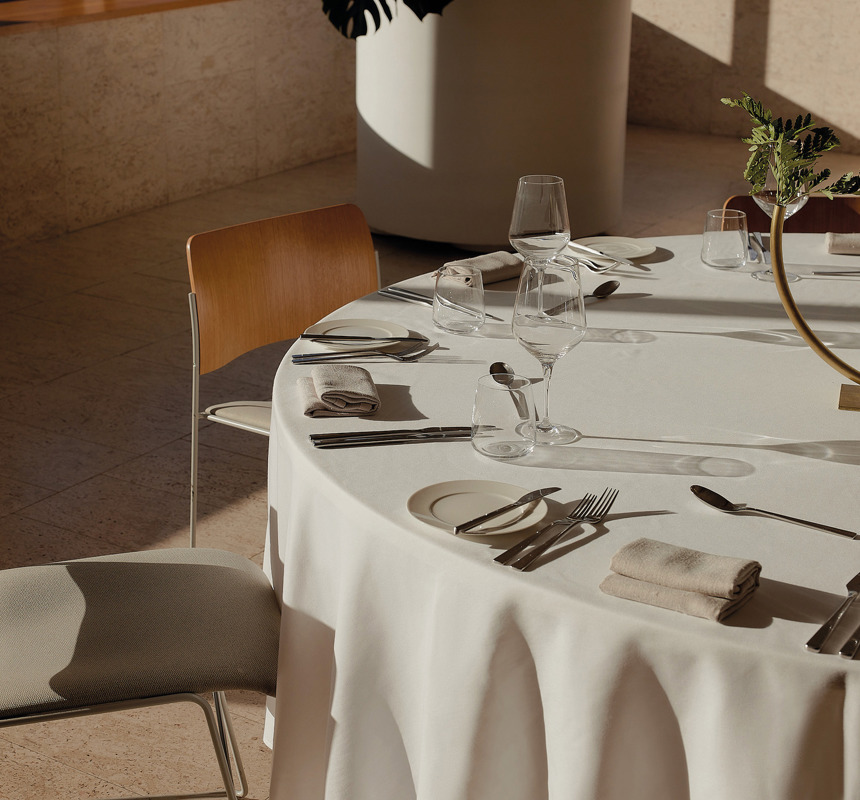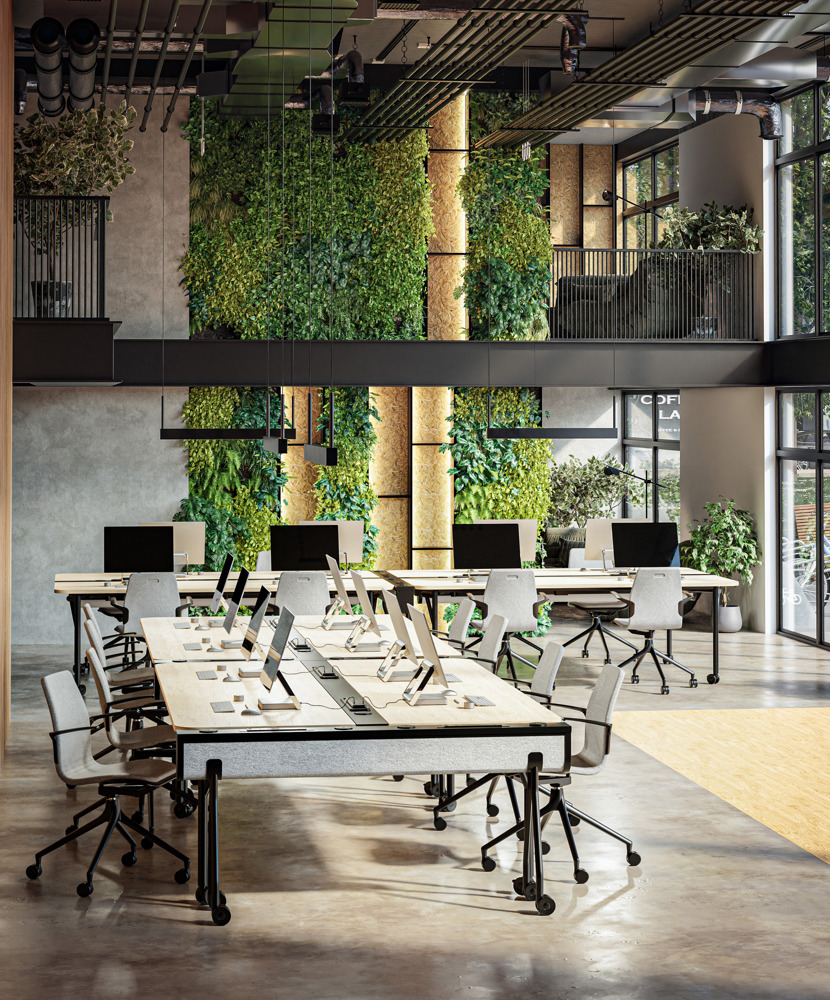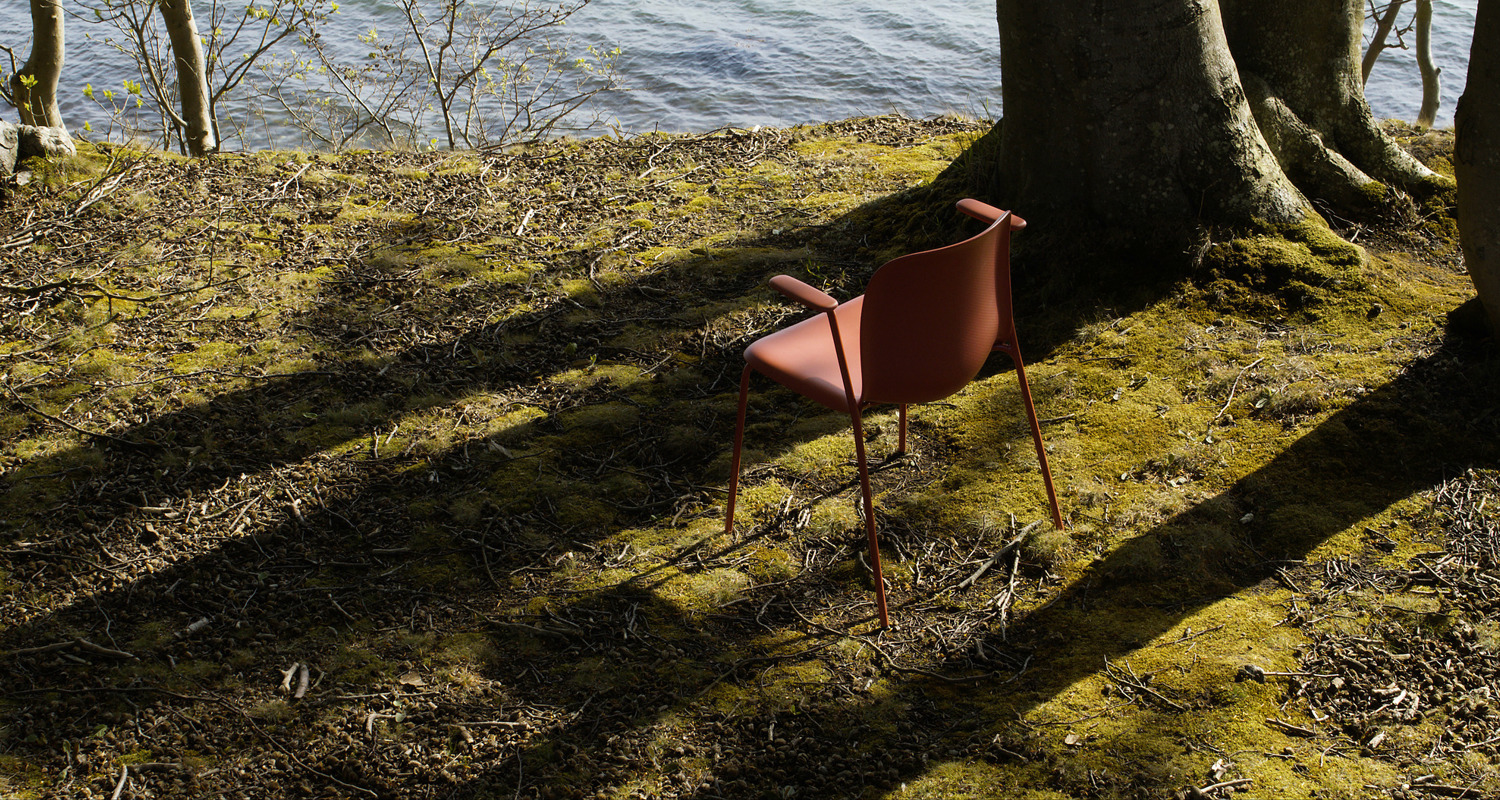CONNECTING EMPLOYEES WITH NATURE THROUGH SUSTAINABLE FURNITURE
In today's fast-paced world, where people spend the majority of their time indoors, reconnecting with nature has become an important design philosophy. The concept of biophilic design has emerged as a transformative trend. Rooted in the idea that humans have an innate connection to nature, the philosophy brings elements of the outdoors into the workspace, helping employees feel more relaxed, engaged, and productive. This approach reshapes how we think about interiors, blending nature-inspired elements with innovative, sustainable solutions.
In this article, we’ll see how nature-fueled workspaces are elevating productivity and aesthetics, with a particular focus on sustainable and space-saving furniture. We’ll also explore how companies like HOWE create eco-conscious designs aligned with principles of biophilia.


WHAT IS BIOPHILIC DESIGN?
Biophilic design is an architectural philosophy of reconnecting humans with nature by bringing outdoor elements in. From plants and sunlight to organic materials and textures, the goal is to create settings that echo the peace, calm, and beauty of our natural world.
Scientific studies show that exposure to nature reduces stress, improving cognitive function and overall well-being. As many employees spend upwards of 40 hours a week inside, office spaces embracing biophilia will boast the most inviting, energizing, and productive atmosphere.
Whether through the strategic placement of greenery, the use of earthy color schemes, or the installation of green office furniture, biophilic design creates a healthier, more balanced workspace. And, as we’ll see, it’s not just about aesthetics, but sustainability, too.
SUSTAINABILITY AND BIOPHILIC DESIGN
Sustainability is inherent to biophilic principles. Indeed, promoting a connection to nature with interior solutions harmful to the environment would be counterintuitive. Green practices – selecting furniture made from eco-friendly materials or optimizing office layouts with compact designs – are key to creating workspaces both functional and responsible.
At the heart of sustainable office design is a strong notion to minimize environmental impact while maximizing comfort and utility. This is where space-efficient furniture plays a role. Compact, flexible pieces ultimately allow for better use of limited square feet, reducing material consumption, and lowering one’s carbon footprint. By selecting modular, multifunctional furniture, we can create adaptable workspaces that grow with our needs while curtailing waste.

WHY SPACE-SAVING FURNITURE IS A SUSTAINABLE CHOICE
In many office settings, maximizing every inch of space is vital. Open-plan, co-working, and hot desking layouts have become the norm, making space-saving furniture ideal. These smart designs reduce the need for bulky, static pieces, creating environments as adaptable as the teams who work within them.
But beyond practicality, space-efficient furniture is more sustainable. It allows businesses to furnish their offices using fewer materials and less energy, reducing the environmental impact of production and transportation. Moreover, compact furniture minimizes waste at the end of its lifecycle, for easier recycling and repurposing.
HOWE’s approach to green office furniture aligns perfectly with this ethos. Their collection offers multi-function, space-efficient pieces made from sustainable materials, helping businesses make environmentally conscious choices without sacrificing style or functionality.
CREATING A NATURE-INSPIRED WORKSPACE
Designing a nature-inspired workspace goes beyond simply adding a few potted plants or wooden furniture. To truly embrace biophilia, companies need to consider how every element in the office — from layout to furniture to materials — forges connection to the natural world.
HOWE’S COMMITMENT TO SUSTAINABLE OFFICE DESIGN
As a leader in sustainable office furniture, HOWE is at the forefront, combining modern design with eco-friendly practices. Their commitment to the environment is evident not only in their use of responsibly sourced materials but also in their focus on space-saving solutions that align with contemporary office needs.
Take the AS400 table — a prime example of space-saving, sustainable design. Crafted with a minimalistic yet elegant approach, the AS400 table folds and stores easily, making it ideal for multipurpose offices and conference rooms. Made with durable, recyclable materials, the AS400 table embodies sustainability and versatility together, supporting businesses in their efforts to create nature-inspired workspaces without excess.
The SixE chair also demonstrates HOWE’s commitment to sustainability and biophilic design. With its lightweight, stackable form, it is designed for easy storage and versatility in any workspace. Now available with shells made from 100% recycled materials, the SixE chair offers both ergonomic comfort and a smaller environmental footprint. Its durable yet eco-conscious design makes it a responsible choice for offices looking to prioritize both style and sustainability.
Both of these pieces exemplify HOWE’s philosophy: creating sustainable furniture that complements the biophilic office furnishings that invite freedom of movement, encourage flexibility, and respect the environment.
HERE ARE A FEW WAYS THAT BUSINESSES CAN INCORPORATE BIOPHILIC PRINCIPLES INTO THEIR WORKSPACES:
- Introduce natural light and fresh air
Natural light is shown to boost mood and productivity. Large windows, glass partitions, and open layouts allow sunlight to penetrate deep into the office, reducing the need for artificial lighting. Similarly, enhancing air circulation with operable windows or air-purifying plants can improve indoor air quality, benefiting both employees and the environment.
- Bring in greenery
Greenery plays a vital role in biophilic design. Beyond their aesthetic appeal, plants purify the air and promote a sense of calm. Incorporating living walls, potted plants, or even outdoor green spaces into the office design creates a direct connection to nature.
- Choose sustainable furniture
Opting for green office furniture is essential for maintaining both the environmental and functional integrity of the workspace. By selecting eco-friendly, space-saving furniture like HOWE’s 40/4 Chair or SixE recycled chair, companies can ensure that their layout dovetails sustainability and biophilia.
- Embrace organic shapes and materials
Nature rarely follows straight lines, and neither should your office design. Consider incorporating furniture and architectural features with soft curves, natural textures, and organic materials such as wood, bamboo, or wool. This helps create a harmonious, calming environment that mimics the organic beauty of nature.
- Maximize flexibility
Flexibility can also express biophilic design, allowing spaces to adapt to changing needs. Space-saving furniture like HOWE’s modular tables and stackable chairs support flexible, multipurpose use. By reducing the need for permanent fixtures, companies can maintain an agile workspace that accommodates evolving workflows while keeping things simple and natural.
THE FUTURE OF OFFICE DESIGN: WHERE SUSTAINABILITY MEETS WELL-BEING
As companies continue to recognize the value of biophilic design, we can expect more office environments that prioritize well-being, sustainability, and productivity. The intersection of these trends marks a significant shift in how we think about workspaces — moving from static, lifeless environments to vibrant, dynamic offices that reflect the principles of nature-inspired workspaces.
HOWE’s dedication to creating green office furniture that complements biophilic design principles is not just a response to current trends — it’s a forward-thinking approach to a more sustainable, eco-conscious future. By choosing furniture that is both functional and environmentally responsible, companies can make a positive impact on their employees and the planet at once.
Building biophilia into the office is ultimately about more than aesthetics; it’s about creating spaces where people feel connected to the natural world. Through the use of sustainable, space-saving furniture, companies can create a harmonious, productive work environment that benefits both people and the planet — an investment in a healthier, happier, and more sustainable future.







